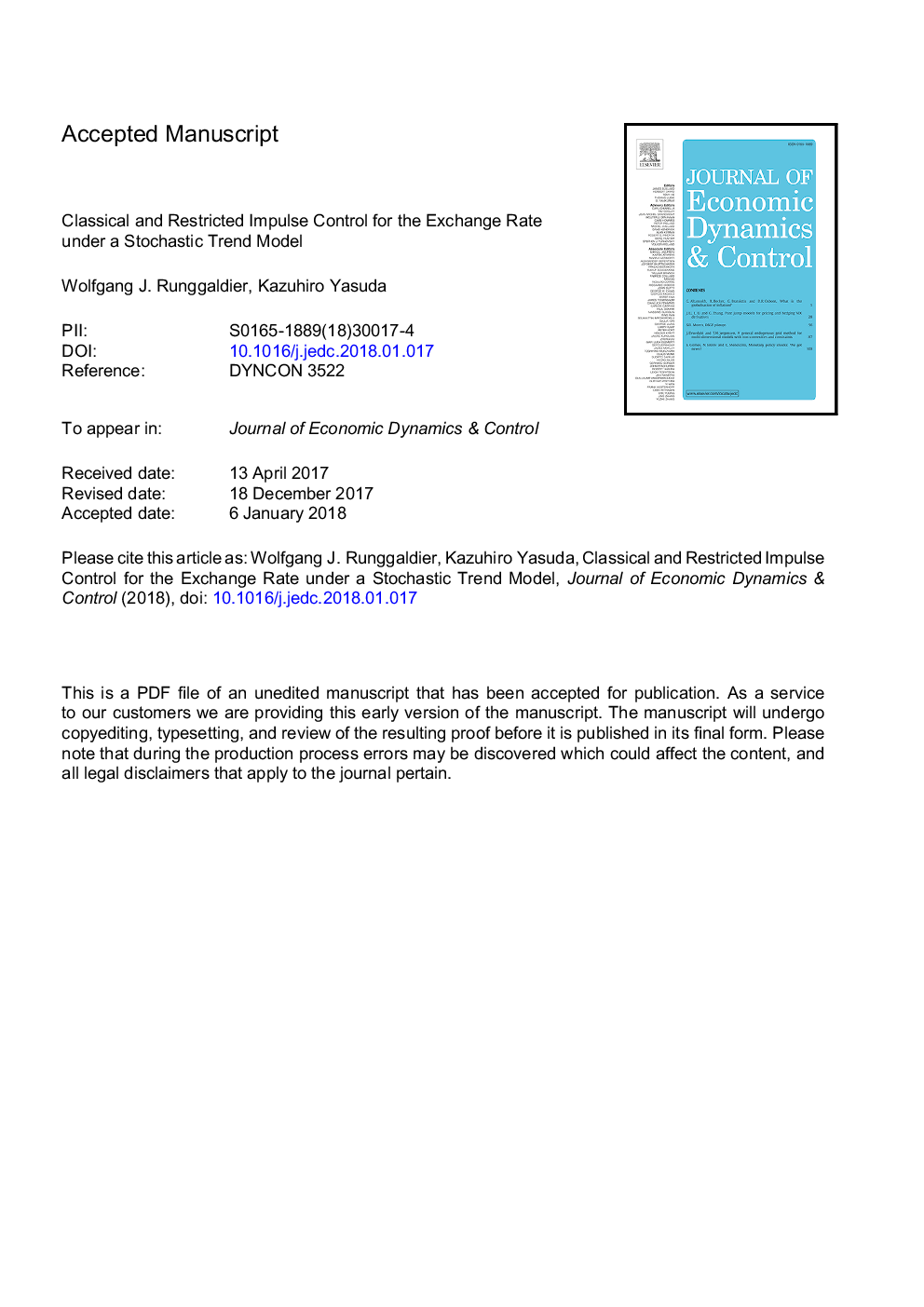| Article ID | Journal | Published Year | Pages | File Type |
|---|---|---|---|---|
| 7358614 | Journal of Economic Dynamics and Control | 2018 | 26 Pages |
Abstract
Building on Cadenillas and Zapatero (2000) and Bertola et al. (2016) we consider the problem faced by a Central Bank to optimally control the exchange rate, whereby the control is composed of a direct impulse control intervention and an indirect, continuously acting intervention given by the control of the domestic interest rate. Similarly to Cadenillas and Zapatero (2000) and Bertola et al. (2016) we formulate the problem as a mixed classical-impulse control problem and the approach is based on a quasi-variational inequality by considering a specific class of the optimal value functions and controls. As in Bertola et al. (2016), but differently from Cadenillas and Zapatero (2000), we consider a finite horizon that makes the problem time inhomogeneous and we do not have to impose a smooth fit condition so that a fully analytical solution is possible. With respect to Bertola et al. (2016) we generalize the problem by letting, more realistically, the drift in the dynamics of the exchange rate to be time varying or even unobservable so that it has to be filter-estimated from observable data. Numerical illustrations are presented as well.
Keywords
Related Topics
Physical Sciences and Engineering
Mathematics
Control and Optimization
Authors
Wolfgang J. Runggaldier, Kazuhiro Yasuda,
